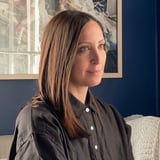Summary
Science orgs typically lack designers and for good reason; there is no product. The focus is on data. The currency is discovery. Why spend money on a designer when we need to buy a new microscope? So how do we create a better experience through design for science? In this talk, Mark will outline his approach to operationalizing design in science orgs, first in CERN and now at the European Molecular Biology Laboratory.
Key Insights
-
•
Scientific organizations like CERN and EMBL prioritize publishing and discovery over commercial success, reshaping design's role and value.
-
•
In science-driven cultures, 'designers' broadly include many digital tool creators not formally recognized as designers.
-
•
Bottom-up governance without top-down mandates leads to a heavily siloed, decentralized environment challenging for design ops.
-
•
Incremental marginal gains, a concept from elite sports, can drive meaningful improvements in complex scientific organizations.
-
•
Adapting to organizational culture and existing communication rituals, such as scientific poster sessions, improves design uptake.
-
•
Debate and scrutiny embedded in science happen mainly through committees, which design ops should engage, not avoid.
-
•
Persistent, repeated communication is a major part of design leadership in environments resistant to change.
-
•
Titles and language matter: calling user researchers 'researchers' risks confusing roles with scientists.
-
•
A culture fixated on science over design means entrenched status quos protect research group autonomy and can resist change.
-
•
Design ops success in science relies on cross-organizational presence and sponsorship from leadership focused on enabling science.
Notable Quotes
"There are thousands of people making digital things every day, but we don’t call them designers."
"Success here isn’t shipping products, it’s delivering great science and publishing."
"The organization is bottom-up; there are no top-down yearly objectives we have to meet."
"If you reframe who you think a designer is, our design team overnight became about 500 people."
"It’s the aggregation of marginal gains, tiny changes across a system that add up to something big."
"All fixed set patterns are incapable of adaptability and pliability. The truth lies outside of fixed patterns."
"90% of my job is saying the same thing over and over and over again."
"Calling user researchers ‘researchers’ sets them up for failure because scientists already own that title."
"Committees are the mechanism for debate and scrutiny in science, so I’ve chosen to engage with them."
"We have to work with the organization culture, not against it, and see what sticks."
Or choose a question:
















More Videos

"We need to break the dream and move from spectators to actors who create knowledge grounded in our reality."
Verónica Urzúa Jorge MontielThe B-side of the Research Impact
March 12, 2021

"VoiceOver’s screen curtain is designed to protect privacy because we don’t always know who’s looking over our shoulder."
Sam ProulxUnderstanding Screen Readers on Mobile: How And Why to Learn from Native Users
March 27, 2023

"The challenge is co-developing a custom investment model that alters decision making based on portfolio logic rather than project-based thinking."
Milan Guenther Benjamin KumpfThe $212 billion ‘so what?’: unlocking impact in development cooperation
November 20, 2025

"Adjust your conference time zone setting depending on where you are to avoid confusion."
Bria AlexanderOpening Remarks
November 18, 2022

"When we solve accessibility challenges, everyone benefits, not just people with disabilities."
Sam ProulxTo Boldly Go: The New Frontiers of Accessibility
June 10, 2022

"Make me a dashboard, no matter what, is the one thing I've heard more than anything else for 20 years."
Theresa NeilJust Build Me a Dashboard!
April 9, 2019

"I've thrived on being wrong and making mistakes, even when I wasn't actually wrong."
Tricia WangSCALE: Discussion
June 15, 2018

"If we had pulled something off the internet, half the time would be spent on critique."
Saara Kamppari-Miller"Prototype" vs "Prototype"--Breaking Down and Rebuilding Our Understanding of What We Do
October 24, 2019

"We want you to come in with a learning agenda—it’ll help you get more out of the event."
Louis RosenfeldWelcome / Housekeeping
June 7, 2023
















